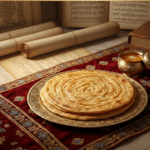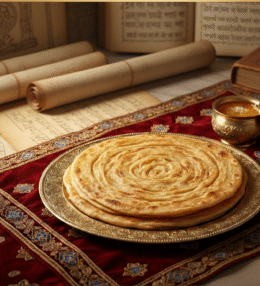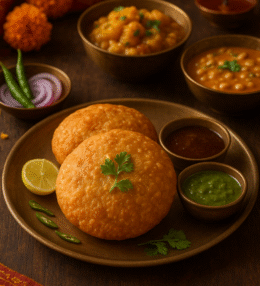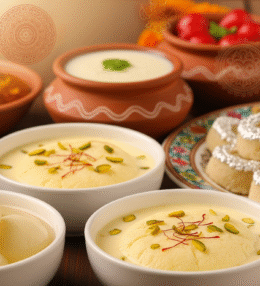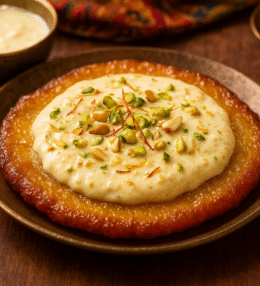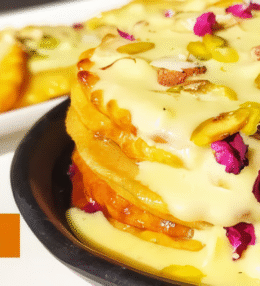In Bengal, sweets aren’t just a dessert; they are the very essence of life, a language spoken at every celebration, and a nostalgic taste that travels with Bengalis across the globe. While the world knows the Rasgulla and Sandesh, the story of these iconic sweets is far more intricate, woven with threads of history, colonial influence, and fierce regional pride. This is the untold story of Bengal’s Mishti.
From Soil to Soul: The Ancient Roots of Sweetness
Before the famous confections of today, Bengal’s sweet-making tradition was deeply tied to its fertile land. The region’s climate was perfect for cultivating sugarcane and date palms, giving rise to two key sweeteners: refined sugar and the treasured Nolen Gur (date palm jaggery). For centuries, these natural ingredients were used to create simple, rustic sweets like Patishapta and Naru, but a revolution was on the horizon.
The true golden age of Bengali confectionery blossomed under the patronage of the zamindars of the Nadia district in the 18th and 19th centuries [1]. These wealthy landowners competed to host the most opulent feasts, leading to a flourishing of culinary artistry. It was in their kitchens that master sweet-makers, or Moiras, began to innovate, laying the groundwork for the modern Bengali sweet shop.
The Portuguese Paradox: The Birth of Chhena
The most pivotal moment in this history is a delicious irony: the accidental discovery of chhena. Before the arrival of the Portuguese in the 16th century, curdling milk was considered a sin, a destruction of a sacred food. But the Portuguese, who used acid to curdle milk for their own cheeses, unknowingly introduced a technique that would change Bengali cuisine forever [2].
A shrewd Bengali confectioner, seeing the potential in this “ruined” milk, began to experiment. They discovered that by kneading and molding the soft chhena, they could create a sweet that was lighter and more delicate than anything made from solid milk. This was the birth of the chhena-based sweet, the very DNA of today’s Rasgullas and Sandesh, and a testament to Bengali culinary ingenuity.
The Rasgulla Wars: A Battle for Ownership
The story of the Rasgulla is a saga of sweet competition. For decades, a heated debate raged between Bengal and Odisha over its origin.
- Odisha’s Claim: They argue that their Rasgulla, known as “Khira Mohana,” has a centuries-old history as a sacred offering to Lord Jagannath at the Puri temple. This connection to divinity makes it a part of their cultural fabric.
- Bengal’s Claim: Bengal credits Nobin Chandra Das, a Kolkata-based confectioner, with perfecting the modern, spongy and syrupy version in 1868 [3]. His unique technique of kneading chhena and boiling it in sugar syrup transformed it from a simple sweet to a global phenomenon.
The dispute culminated in a legal battle, resulting in both states receiving their own Geographical Indication (GI) tags—“Banglar Rasogolla” for Bengal and “Odisha Rasagola” for Odisha [4]. This outcome beautifully encapsulates the essence of the sweet: its ability to spark fierce pride while remaining a shared symbol of joy.
Sandesh: A Sweet of Aristocracy and Artistry
If the Rasgulla is the beloved king, the Sandesh is the sophisticated queen. Unlike its syrupy cousin, Sandesh is a dry sweet made from finely kneaded chhena, a perfect canvas for artistry. It was the preferred sweet of the Bengali babus (gentlemen) in colonial Calcutta, who valued its delicate texture and subtle flavors.
Sandesh is a testament to the skill of the confectioner. It can be flavored with anything from saffron and pistachio to the seasonal Nolen Gur, and it is molded into intricate shapes and adorned with silver leaf. Famous shops like Bhim Nag and Girish Chandra Dey & Nakur Chandra Nandy, which still operate today, perfected this art, turning Sandesh into a form of edible sculpture [5].
The Sweet Rhythm of Daily Life
Beyond special occasions, sweets are woven into the very fabric of everyday Bengali life. “Sweetening the mouth,” is a common custom. This practice elevates sweets from a mere dessert to a symbolic expression of joy and hospitality.
- The “Mishti Mukh” Tradition: This is the custom of having something sweet to begin a new venture, share good news, or celebrate a small victory. It literally means “sweetening one’s mouth.” This tradition highlights the emotional and symbolic role of sweets in daily interactions.
- A Staple in Hospitality: No Bengali home visit is complete without an offer of sweets. This act of hospitality, whether for a guest or a family member, is a fundamental part of the culture.
Regional Diversity: Beyond Kolkata’s Famous Shops
While Kolkata’s sweet shops are legendary, Bengal’s sweet traditions are also deeply regional. The culinary landscape changes as you move across the state. In rural areas, the tradition of making Pitha is celebrated during Poush Parbon, the winter harvest festival. These steamed or fried rice flour cakes, often filled with jaggery and coconut, showcase the diversity of Bengali sweets beyond the famed chhena-based varieties. Additionally, before the partition, regions like Jessore and Dhaka had unique sweet-making traditions that migrated and evolved, adding another layer to Bengal’s rich culinary history.
Lost Legacies & Modern Twists
The full story of Bengali sweets includes both the glorious past and the innovative present. While many traditions have been passed down through generations, some exquisite creations have vanished. These extinct sweets often required immense skill and specific ingredients that are no longer available or widely appreciated by a changing palate. Recipes for delicacies like Abar Khabo, a complex layered sweet, and some forms of Monohara have been lost as the master confectioners who created them passed away without apprentices to carry on their legacy [6].
However, a new chapter is being written with fusion sweets. Bengali chefs and confectioners are embracing innovation, creating delightful hybrids like Rasgulla Cheesecake, Sandesh Tiramisu, and Rosomalai Ice Cream. These creations are no longer confined to local sweet shops. They are being showcased globally, from food festivals in Dubai to Michelin-starred restaurants in London, representing a new era of India’s culinary diplomacy.
Key Takeaways
- Bengal’s sweets are deeply tied to history, religion, and cultural pride. From the ancient practice of using jaggery to the modern GI tag battles, every sweet tells a story of its origin and people.
- Rasgulla is more than food—it’s a matter of state identity. The fierce competition between Bengal and Odisha over its origin highlights how a simple dessert can become a powerful symbol of regional pride.
- Sandesh and Nolen Gur delicacies symbolize Bengal’s artistic creativity. The intricate shapes of Sandesh and the seasonal use of Nolen Gur demonstrate a rich tradition of craftsmanship and a deep connection to the land.
- Modern fusions ensure Bengali sweets remain timeless yet trendy. While some ancient recipes have been lost, new creations are keeping the tradition alive, adapting to a global palate while maintaining their core identity.
Sources
[1] Roy, Parama. The Culinary Heritage of Bengal: A Historical Perspective. Penguin Random House India, 2018.
[2] Sen, Surojit. “How the Portuguese Taught India the Art of Making Cottage Cheese and Why We Are All for It.” The Better India, 2017.
[3] Chaki, M. “Rasgulla: The Sweetest Battle.” The Times of India, 2017.
[4] Government of India, Geographical Indications Registry. GI Tags for “Odisha Rasagola” and “Banglar Rasogolla.”
[5] Chakrabarty, S. “Kolkata’s Famous Sweet Shops and Their Legacy.” The Telegraph India, 2019.
[6] Datta, Joyita. “The Vanishing Sweet Legacy of Bengal.” The Statesman, 2018.
Keywords: Bengali sweets, Bengali mishti, Rasgulla, Sandesh, Indian sweets, Indian desserts, History of Bengali sweets, The Untold Story of Bengali sweets, Rasgulla wars, Origin of Rasgulla, Bengali Sandesh, Nolen Gur, Mishthi Doi, Chhena (curdled milk), Bengali confectionery, Extinct Bengali sweets, Lost Bengali sweets, Bengali fusion sweets, Rasgulla Cheesecake, Rosomalai Ice Cream, Indian culinary diplomacy


